In 1959, the B-series engine was debuted which was good news for Chrysler replacing the Hemi engine. The B-series was a simple design, producing slightly higher horsepower and contained a higher displacement. Its cost f manufacturing was cheaper, it was lighter giving Chrysler even more reason to discontinue the Hemi engine which had once been big news which earned Chrysler several winnings in NASCAR. The ‘Golden Lion’ engine was positioned slightly below the New Yorker script at the rear point of the front fender.
The Hemi engine was durable lasting through 1996 and despite this, it was never returned on the New Yorker. The New Yorker performance image was slowly diminishing making it later to be re-branded as a luxury vehicle. In the second generation, on the Mopar line in 1964, a Hemi engine was re-introduced as a 426 Hemi.
The New Yorker was powered by a 413 cubic inch engine and had hydraulic valve lifters, a four-barrel carburetor borrowed from Carter, a ratio of 10.0:1 compression, the main bearings were five and released 350 horsepower at 4,600 RPM. Standard on the New Yorker was an automatic transmission TorqueFlite, power brakes, power windows, and power steering were all standard. The changes made included a new front end and tail fins. A new sphere-shaped color sweep that had horizontal top trim was introduced, the bottom trim molding was a bit larger at the rear, and was dipped to the bumper level height. At the back, there was an additional seven slash-type stripes.
Being the top-of-the-line model, the New Yorker was available with 22 intertwining types of upholstery fabric which were both vinyl and Jacquard fabric. 1959 was the last separate body and frame construction. 1960 Chryslers had unibody construction. Headlights were slanted for 1961, a new grille and a continental kit on the trunk.
